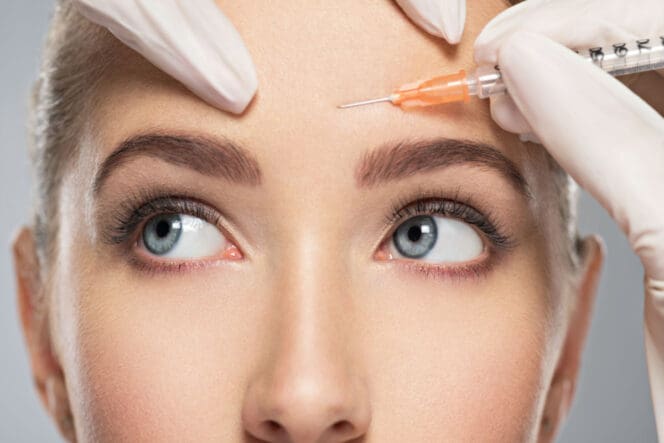Botulinum toxin (Botox) is a tool for many plastic surgeons to get rid of facial wrinkles as people age. But Botox has negative long-term effects if it is overused or abused. That includes weakened nerves and muscles, which can break down over time.
Botox Long-Term Effects
In massive doses, Botox is life-threatening. However, the small dosages administered during a Botox injection makes it relatively safe. Out of the 3 million Botox injections administered yearly, there were only 36 reported adverse effects as of 2005.
Research shows participants only suffered from toxic effects on the 10th or 11th injection after prior injections without complications.
Neuromuscular Changes
Botox affects nerve and muscle activity for a long time. Muscle thinning and weakening (atrophy) ensues because Botox temporarily restricts communication between muscle and nerves, eliminating the muscle’s tension-generating capacity.
Botox also indirectly makes the bones lose their density slowly, increasing the risk of fractures.
General Body Weakness
People with neurologic diseases like Bell palsy, cerebral palsy and mental retardation often suffer from excessive drooling. One way to treat it is using Botox. When you inject Botox into the salivary glands, it reduces the drooling, but it also weakens your body.
Skin Discoloration
Botox injections might result in pigmented skin or even an uneven appearance. If you already have thin skin, you may be more susceptible to this problem. That is because unequal toxin distribution is often the source of discoloration and wavy textures. When an inexperienced doctor fails to deliver the drug evenly, muscles beneath the skin flex unevenly.
Breathing and Swallowing Difficulty
Botox can treat difficulty in breathing (dyspnea) and swallowing (dysphagia). However, the U.S. Food and Drug Administration (FDA) says it can cause respiratory and swallowing issues hours, days or weeks after an injection.

Botox Around the Eyes
The temporary side effects of injecting Botox around your eyes include pain, droopy eyelids and fat bulges. There are also some potential side effects, such as bruising, muscle weakness, and bruising.
Serious but rare side effects of Botox include:
- Blurry or double vision
- Facial asymmetry
- Loss of facial muscle control
- Breathing difficulties
- Hoarse voice
Long-term data shows that when used in the right way, the chances of long-term Botox complications are low, even in the cases of multiple injections. But if you fit into the small percentage of people who received many Botox shots, you can experience something called “mask face.” That is a condition in which you have permanent changes to your face in that you have an expressionless, mask-like face.
You could also find yourself dealing with dry eyes, superficial punctate keratitis or eyelid ptosis. Superficial punctate keratitis is a condition caused by the death of small groups of cells on the cornea’s surface. It leads to red and watery eyes that are light-sensitive. Eyelid ptosis usually develops if Botox injections are made on or under the middle part of the eyebrow, where the toxin seeps to an upper eyelid levator muscle.
References
-
Facial vascular danger zones for filler injections. (September 2020). Dermatologic Therapy.
-
The whole truth about botulinum toxin – a review. (February 2019). Advances in Dermatology and Allergology.
-
Botulinum Toxins and Muscles Atrophy: The Wanted and Unwanted Effects. (January 2016). Aesthetic Surgery Journal.
-
Medication guide BOTOX cosmetic for injection. (January 2016). U.S. Food and Drug Administration.
-
Serious and Long-Term Adverse Events Associated with the Therapeutic and Cosmetic Use of Botulinum Toxin. (January 2015). Karger.com.
-
Dry eyes and superficial punctate keratitis: a complication of treatment of glabelar dynamic rhytides with botulinum exotoxin A. (December 2004). Dermatologic Surgery.
-
Botulinum toxin for treating sialorrhoea in ALS: severe side effects of a transductal approach. (March 2001). Journal of Neurology, Neurosurgery & Psychiatry.
Last Updated June 8, 2022
Note: This page should not serve as a substitute for professional medical advice from a doctor or specialist. Please review our about page for more information.